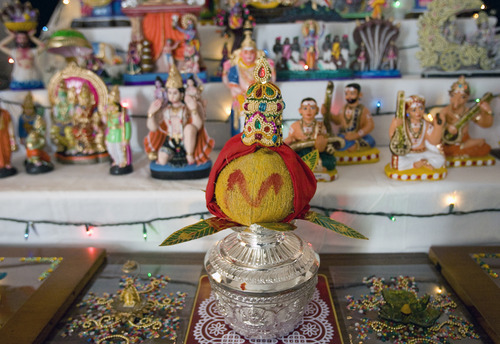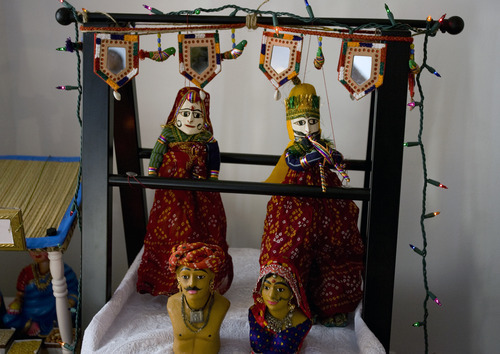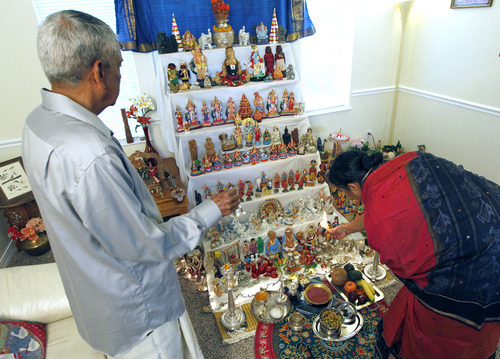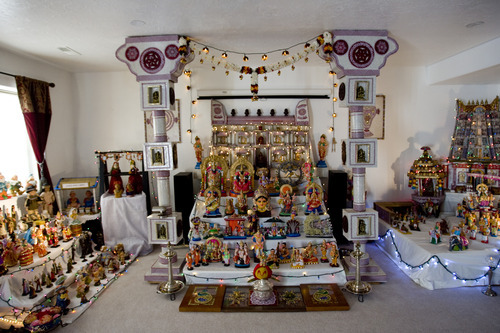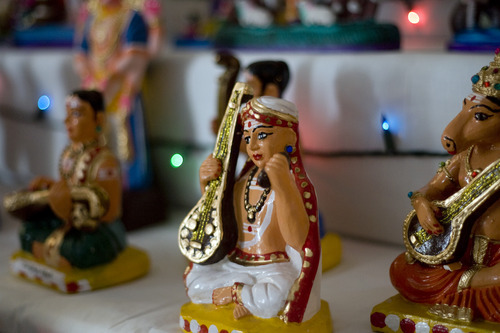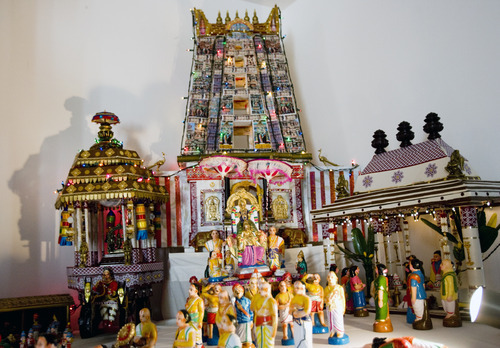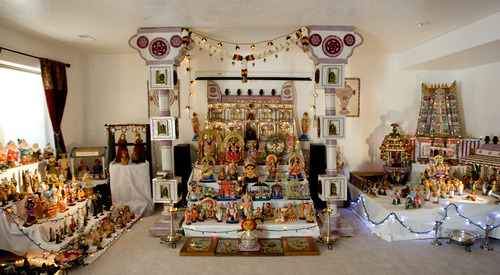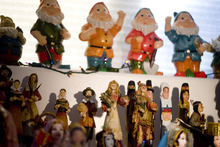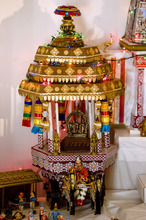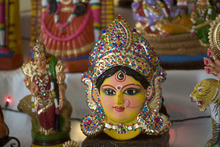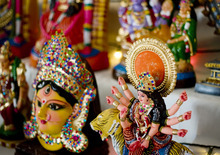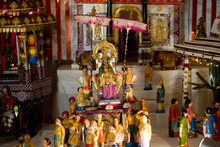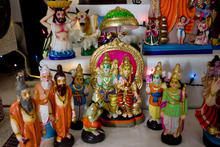This is an archived article that was published on sltrib.com in 2012, and information in the article may be outdated. It is provided only for personal research purposes and may not be reprinted.
South Jordan • It took Indra and Neale Neelameggham hours and hours to set up their temporary shrine for the nine-day Navratri festival to honor the goddess Durga, who, as the story goes, vanquished the demons and brought back the light.
The Neelamegghams wanted their shrine to be artistic but whimsical, expressing the notion of a goddess at play. They felt it should be appealing to Hindu children, who learn their faith and life's virtues through storytelling. And, given that Durga means "invincible" in Sanskrit, the display needed to show the goddess' strength and triumph.
What's particularly remarkable about this festival is that it is largely about women and children, Indra says. "You don't have to call in a priest."
So the South Jordan couple dedicated their entire Sunday to making it just right for the annual holiday, which began Oct. 15.
First, Neale had to build the platform, with steps climbing up the wall to the highest level, each row representing various mythologies and stages of belief.
Next the Hindu couple painstakingly peopled the ascending platforms with hundreds of painted clay dolls they have been collecting on trips to India for the past 20 years.
On the bottom rung — and spread out on the floor — were figures from everyday human life: a blue-robed pair of shopkeepers surrounded by their wares, a wedding party, merchants, cricket players, even Donald Duck and Mickey Mouse.
Next up were images of the world's attractions, including dolls from various regions.
On the third step were figures detailing the 10 incarnations of the god Vishnu, evolving from a fish to half-animal, half-human, to an angry man and finally to an ideal human.
Up the figures went until the top step was a rice-filled "pot of plenty," Indra says, symbolizing fulfillment of all worldly aspirations and the "spirit of the all-pervading god."
Each day and night of the festival, Indra explains, Hindus open their homes to visitors — and go see other displays. They bring "goody" bags filled with items such as makeup for moms and toys for children.
On the fifth day, members of Utah's 9,000-member Hindu community gather at the Sri Ganesha Temple in South Jordan to see colorfully clad families in a communal dance. In a corner niche is a similar shrine to Durga, festooned with dolls donated by members.
The ninth day brings an homage to the goddess of learning. Families pile up books in an additional shrine to show respect and worship knowledge.
The final night is the "day of victory of good over evil." Any item or tool that helps believers overcome challenges, even a hammer, is worshipped that day. A giant bonfire burns an effigy of a demon, representing the end of darkness. The dolls are laid down "to sleep," while milk is left for them. In the morning, the kids are astonished to see the "milk has been consumed," Indra says.
Alpine resident Madhu Gundlapalli also likes the emphasis on women, especially to showcase their creativity.
"Other than the ability to buy or collect dolls, it is also an opportunity to use household items in your display and to make dolls," she says. "You can use any household items to express a feeling or tell a story."
Gundlapalli's display blends "traditional and nontraditional," she says. "I used my son's G.I. Joe to portray a battle scene and get him involved."
It is, of course, the female goddess Durga — not an American military leader — who commands the Navratri scene. Yet this potent deity remains a mother figure as well, and Hindu kids seem to get the multilayered message.
Twitter: @religiongal


